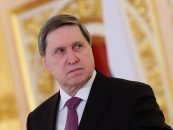Exclusie interview with Yngve Slyngstad, Managing Director, the Norwegian Government Pension Fund
AT: Mr. Managing Director, the Government Pension Fund has existed for over 21 years. What would you like to underline in the activities of the fund up to today?
Large petroleum revenues from the Norwegian Continental Shelf have resulted in substantial financial assets in the Government Pension Fund. The purpose of the Government Pension Fund is to facilitate government savings necessary to meet the rapid rise in public pension expenditures in the coming years, and to support a long-term management of petroleum revenues. The Fund is not ear marked for pension expenditures. The Government Pension Fund Global was enacted in 1990 – the under the name of the Government Petroleum Fund. The law provided an important institutional framework for the relationship between the Fund and the government’s general budget. Norges Bank, Norway’s central bank, was chosen as Fund manager, under rules and regulations given by the Ministry of Finance as the Fund’s owner.
Norges Bank Investment Management (NBIM) is part of the central bank and responsible for the fund’s investments.
In 1996, the Ministry of Finance, made the first transfer to the fund. In the beginning, the fund was invested in line with the Bank’s currency reserves investments, Le. in government bonds. From 1998,
equities were introduced, and 40 per cent of the fund was allocated to this asset class. At the same time, a professional management organization was established inside the central bank, but much more independent than the traditional wings of the bank.
The investment universe was gradually expanded during the next years, with the introduction of corporate bonds, agency bonds, small cap equity and several new countries, including many emerging markets.
In 2007, the Norwegian government increased the equity share from 40 to 60 per cent. During the next two years, amidst the financial crisis, the fund invested USD 180 bn in equities.
In 2010 Norges Bank received a mandate from the Ministry of Finance to invest in real estate. In a few years, our aim is to invest up to 5 per cent of the fund in real estate. So far (mid-August 2011) the fund has made two property investments, totaling 0.3 per cent of the fund’s assets.
AT: Has the global financial crisis of2008 affected the fund?
During 2008, the fund’s performance deteriorated. Our 2008 annual report was published in March 2009, and presented a negative return of 23 per cent for 2008. The report led to a public debate on active management, on asset class allocation and on the fund model itself. The government decided to stick with the strategy, and NBIM was not forced to liquidate the positions that had lost their value during the financial crises. The losses of 2008 were wholly recouped during the next two years.
The crisis revealed shortcomings in the management and measurement of risk in many financial institutions. At NBIM, the risk and compliance departments were expanded. The most important and lasting effect of the crisis for the fund was maybe that we were able to double the fund’s share of the world’s listed equity to 1 per cent in two years time.
AT: The fund is founded by the Finance Ministry, but Norges Bank Investment Management – the capital management wing of the central bank – is in charge of specific investments. What is behind this scheme?
The Norwegian model implies a clear division of responsibilities between the Ministry, as the Fund’s owner, and NBIM as the Fund manager. The Ministry of Finance is responsible for the investment strategy. All major strategic issues are discussed in the Norwegian parliament as a part of their annual debate on the Ministry’s white paper on the fund’s management. Given the size of the Fund, a high degree of transparency is required in order to have a broad domestic legitimacy.
The most important decisions made by the Ministry are defining the investment universe and the weights given to different asset classes. The Ministry also sets the limit for NBIM’s active management of the Fund.
NBIM makes the actual investment decisions and engages in trading of securities and real estate, but operates inside the framework set by the government and the board of the central bank. The Ministry of Finance is not involved in any specific investment decisions.
AT: How much money is in the «treasury » of future generations. In general, when is the predicted period for the end of oil and gas revenues in Norway. Given this, how much will the future generations get?
The Fund is an integral part of the Norwegian Public Budgets. The government established fiscal policy guidelines in 2001, which is anchored in a guideline that over time the structural, non-oil budget deficit shall correspond to the real return on the Fund, estimated at 4%. It is important to point out, that this is a political objective and not a legal requirement.
Over the last 10 years the spending has corresponded fairly well with this rule. If spending is kept in line with the fiscal guidelines, and the return of the fund averages 4 per cent over the long term, the real value of the fund will be preserved and would be a source of revenue for future generations of Norwegians.
The future size of the fund is depending on the development of international financial markets, the oil price, petroleum extraction in Norway and the fiscal policy as decided by the Norwegian parliament. All these factors are associated with a degree of uncertainty. Scenarios from the Ministry of Finance indicate the fund could double in value over the next decade.
Oil and gas production in Norway are probably close to its peak. The Petroleum Directorate predicts that a little more than half of the total reserves are yet to be produced.






